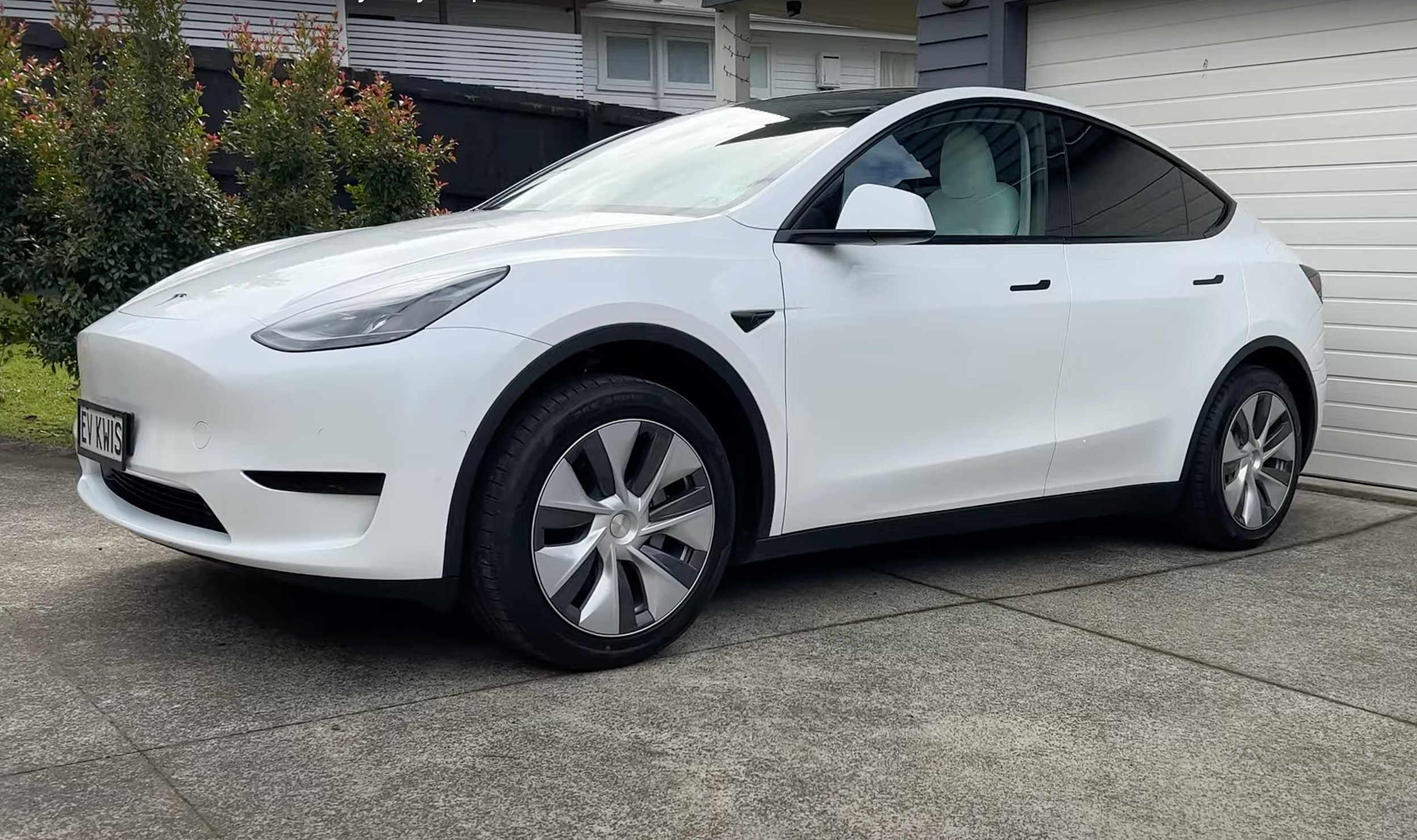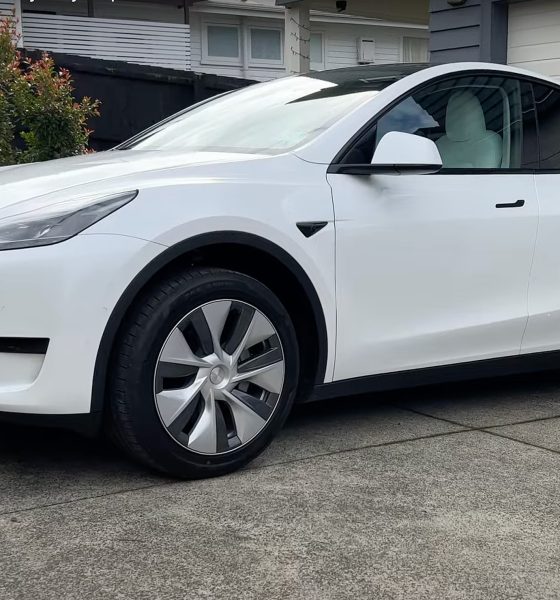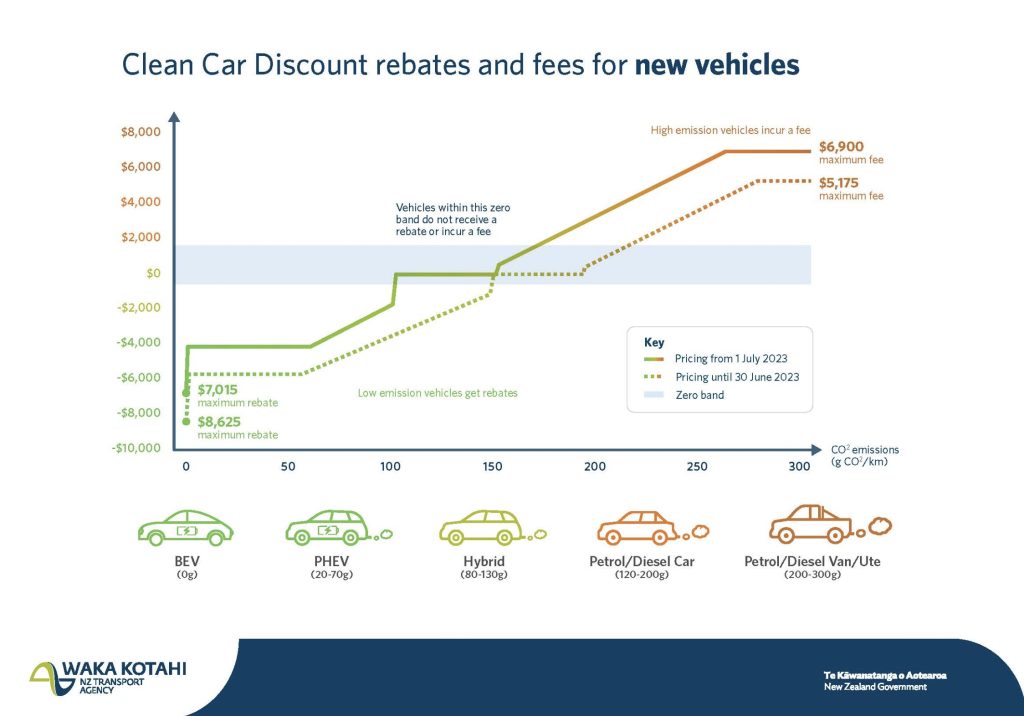

News
Tesla revenue from NZ EV rebates hint at potential IRA benefits [Feature]
Tesla doubled its revenue after New Zealand’s Clean Car policy introduced rebates to decarbonize its fleet. Tesla New Zealand’s revenue hints at the potential benefits of the United States Inflation Reduction Act (IRA).
According to the company’s financial records, Tesla New Zealand’s (NZ) revenue for the 2022 calendar year was $499.5 million (USD$303.3), double the company’s $230.7 million (USD$140.1) revenue in 2021. New Zealand’s acting Transport Minister Kieran McAnulty believes the government’s Clean Car policy helped Tesla’s revenues double.
“With over 100,000 rebates granted since the scheme came into effect in 2021, we have one of the fastest uptakes of EVs in the world,” McAnulty said.
Tesla New Zealand’s revenues in the past show an increase in EV adoption. Tesla NZ’s revenue in 2020 was $66 million (USD$40 million) and increased to $230.7 million (USD$ 140.1 million) in 2021. Tesla Giga Shanghai definitely factors into the company’s increased revenues in New Zealand and Australia between 2020 and 2021. However, the New Zealand government’s EV rebates might have aided Tesla’s leap from $230.7 million to $499.5 million between 2021 and 2022.

“The cost of EVs has reduced significantly over the past couple of years. Several popular models are now available for $50,000 to $60,000, whereas previously EVs tended to be closer to $80,000. Rebates for used-import EVs will rise from $3450 to $3507.50 – as the supply of used-import EVs remains restricted. The increased rebates will encourage suppliers to continue to focus on securing supply for New Zealanders,” McAnulty commented.
The New Zealand Herald analyzed data that revealed Tesla benefited significantly from Clean Car policy rebates. Since 2021 when the policy began, 9,730 Teslas were purchased for a total of $83 million (USD$ 50.4 million) rebates paid to the people who bought the electric vehicles (EVs).
New Zealand’s government plans to update its Clean Car policy this year. The update will reduce rebates offered for new zero-emission vehicles—described as electric vehicles by the government—from $8,625 (USD$5238) to $7,015 (USD$4,260). New Zealand also changed rebates offered for used imports and disability vehicles while applying charges for specific emissions. New Zealand’s Clean Car Policy changes will apply from July 1, 2023.
The Inflation Reduction Act’s Potential Impact
New Zealand’s Clean Car Policy hints that people are willing to transition to electric vehicles for the right price. The Inflation Reduction Act (IRA) might yield the same results for Tesla and other EV manufacturers in the United States.
Elon Musk and the Tesla board seem well aware of the IRA’s potential impact on the electric vehicle and global auto market.
“The regulations here are still in flux and there continues to be updates, so this is just our best understanding at the moment. But we think on the order of $150 million to $250 million per quarter this year and growing over the course of the year as our volumes grow,” said Tesla’s Chief Financial Officer Zachary Kirkhorn at the Q4 2022 earnings call.
The IRA doesn’t just affect local automakers and their suppliers either. Companies worldwide involved in EV manufacturing or its supply chain have started investing in the United States to reap the benefits of the IRA. For instance, South Korean battery supplier LG Energy Solutions (LGES) has partnered with a few automakers to build cell manufacturing plants in the United States. LGES has battery plant agreements with Hyundai, Honda, and Ford. Tesla is prepared to take advantage of the IRA’s incentives as well.
“And part of the work we’re doing here, which is part of what this incentive package is trying to incentivize, is, as Elon mentioned, to move more manufacturing onshore in the United States, which is Tesla’s plans anyways. And so, I think we’re pretty well positioned over the coming years to take advantage of this.
“But then also part of what the goal of this incentive package is, is to improve adoption from our customers. And so, we also want to use these incentives to improve affordability as we think about what the price points are in our products going forward,” stated Kirkhorn.
The Teslarati team would appreciate hearing from you. If you have any tips, contact me at maria@teslarati.com or via Twitter @Writer_01001101.

News
Tesla hints at Starlink integration with recent patent
“By employing polymer blends, some examples enable RF transmission from all the modules to satellites and other communication devices both inside and outside the vehicle.”

Tesla hinted at a potential Starlink internet terminal integration within its vehicles in a recent patent, which describes a vehicle roof assembly with integrated radio frequency (RF) transparency.
The patent, which is Pub. No U.S. 2025/0368267 describes a new vehicle roof that is made of RF-transparent polymer materials, allowing and “facilitating clear communication with external devices and satellites.”
Tesla believes that a new vehicle roof design, comprised of different materials than the standard metallic or glass elements used in cars today, would allow the company to integrate modern vehicular technologies, “particularly those requiring radio frequency transmission and reception.
Tesla has recently filed a US patent application on integrating RF transparent materials into the roof structure.
“facilitating clear communication with external devices and satellites”
Tesla fleet is getting @Starlink connectivity integration soon. LFG @Tesla @elonmusk… pic.twitter.com/bLa8YtPLd1
— Chansoo Byeon (@Chansoo) December 9, 2025
Instead of glass or metallic materials, Tesla says vehicles may benefit from high-strength polymer blends, such as Polycarbonate, Acrylonitrile Butadiene Styrene, or Acrylonitrile Styrene Acrylate.
These materials still provide ideal strength metrics for crashworthiness, stiffness for noise, vibration, and harshness control, and are compliant with head impact regulations.
They would also enable better performance with modern technologies, like internet terminals, which need an uninterrupted signal to satellites for maximum reception. Tesla writes in the patent:
“By employing polymer blends, some examples enable RF transmission from all the modules to satellites and other communication devices both inside and outside the vehicle.”

One of the challenges Tesla seems to be aware of with this type of roof design is the fact that it will still have to enable safety and keep that at the forefront of the design. As you can see in the illustration above, Tesla plans to use four layers to increase safety and rigidity, while also combating noise and vibration.
It notes in the patent that disclosed examples still meet the safety requirements outlined in the Federal Motor Vehicle Safety Standards (FMVSS).
Starlink integrated directly into Tesla vehicles would be a considerable advantage for owners. It would come with a handful of distinct advantages.
Initially, the inclusion of Starlink would completely eliminate cellular dead zones, something that is an issue, especially in rural areas. Starlink would provide connectivity in these remote regions and would ensure uninterrupted service during road trips and off-grid adventures.
It could also be a critical addition for Robotaxi, as it is crucial to have solid and reliable connectivity for remote monitoring and fleet management.
Starlink’s growing constellation, thanks to SpaceX’s routine and frequent launch schedule, will provide secure, stable, and reliable internet connectivity for Tesla vehicles.
Although many owners have already mounted Starlink Mini dishes under their glass roofs for a similar experience, it may be integrated directly into Teslas in the coming years, either as an upgrade or a standard feature.
News
Tesla supplements Holiday Update by sneaking in new Full Self-Driving version
It seems Tesla was waiting for the Hardware 4 rollout, as it wanted to also deploy a new Full Self-Driving version to those owners, as it appeared in the release notes for the Holiday Update last night.

Tesla has surprised some owners by sneaking in a new Full Self-Driving version with the wide release of the Holiday Update, which started rolling out to Hardware 4 owners on Friday night.
Tesla has issued a controlled and very slow release pattern with the Holiday Update, which rolls out with Software Version 2025.44.25.5.
For the past two weeks, as it has rolled out to Hardware 3 and older Tesla owners, the company has kept its deployment of the new Software Version relatively controlled.
It seems Tesla was waiting for the Hardware 4 rollout, as it wanted to also deploy a new Full Self-Driving version to those owners, as it appeared in the release notes for the Holiday Update last night.
Tesla Full Self-Driving v14.2.1.25 made its first appearance last night to Hardware 4 owners who are members of the Early Access Program (EAP). It appears to be a slight refinement from FSD v14.2.1, which has been out for a couple of weeks.
Tesla v2025.44.25.5 Holiday update incoming
Also Full Self-Driving v14.2.1.25!!! pic.twitter.com/74D7S0UGXz
— TESLARATI (@Teslarati) December 13, 2025
Many owners welcome the new FSD version, us included, because we’ve been less than impressed with v14.2.1. We have experienced some minor regressions with v14.2.1, especially with Speed Limit recognition, Speed Profile tinkering, and parking performance.
As it stands, Full Self-Driving is still particularly impressive, but Tesla is evidently having an issue with some of the adjustments, as it is still refining some of the performance aspects of the suite. This is expected and normal with some updates, as not all of them are an improvement in all areas; we routinely see some things backtrack every once in a while.
This new FSD version is likely to take care of those things, but it also includes all of the awesome Holiday Update features, which include:
- Grok with Navigation Commands (Beta) – Grok will now add and edit destinations.
- Tesla Photobooth – Take pictures inside your car using the cabin-facing camera
- Dog Mode Live Activity – Check on your four-legged friend on your phone through periodic snapshots taken of the cabin
- Dashcam Viewer Update – Includes new metrics, like steering wheel angle, speed, and more
- Santa Mode – New graphics, trees, and a lock chime
- Light Show Update – Addition of Jingle Rush light show
- Custom Wraps and License Plates – Colorizer now allows you to customize your vehicle even further, with custom patterns, license plates, and tint
- Navigation Improvements – Easier layout and setup
- Supercharger Site Map – Starting at 18 pilot locations, a 3D view of the Supercharger you’re visiting will be available
- Automatic Carpool Lane Routing – Navigation will utilize carpool lanes if enabled
- Phone Left Behind Chime – Your car will now tell you if you left a phone inside
- Charge Limit Per Location – Set a charge limit for each location
- ISS Docking Simulator – New game
- Additional Improvements – Turn off wireless charging pad, Spotify improvements, Rainbow Rave Cave, Lock Sound TRON addition
Tesla also added two other things that were undocumented, like Charging Passport and information on USB drive storage to help with Dashcam.
Cybertruck
Tesla updates Cybertruck owners about key Powershare feature

Tesla is updating Cybertruck owners on its timeline of a massive feature that has yet to ship: Powershare with Powerwall.
Powershare is a bidirectional charging feature exclusive to Cybertruck, which allows the vehicle’s battery to act as a portable power source for homes, appliances, tools, other EVs, and more. It was announced in late 2023 as part of Tesla’s push into vehicle-to-everything energy sharing, and acting as a giant portable charger is the main advantage, as it can provide backup power during outages.
Cybertruck’s Powershare system supports both vehicle-to-load (V2L) and vehicle-to-home (V2H), making it flexible and well-rounded for a variety of applications.
However, even though the feature was promised with Cybertruck, it has yet to be shipped to vehicles. Tesla communicated with owners through email recently regarding Powershare with Powerwall, which essentially has the pickup act as an extended battery.
Powerwall discharge would be prioritized before tapping into the truck’s larger pack.
However, Tesla is still working on getting the feature out to owners, an email said:
“We’re writing to let you know that the Powershare with Powerwall feature is still in development and is now scheduled for release in mid-2026.
This new release date gives us additional time to design and test this feature, ensuring its ability to communicate and optimize energy sharing between your vehicle and many configurations and generations of Powerwall. We are also using this time to develop additional Powershare features that will help us continue to accelerate the world’s transition to sustainable energy.”
Owners have expressed some real disappointment in Tesla’s continuous delays in releasing the feature, as it was expected to be released by late 2024, but now has been pushed back several times to mid-2026, according to the email.
Foundation Series Cybertruck buyers paid extra, expecting the feature to be rolled out with their vehicle upon pickup.
Cybertruck’s Lead Engineer, Wes Morrill, even commented on the holdup:
As a Cybertruck owner who also has Powerwall, I empathize with the disappointed comments.
To their credit, the team has delivered powershare functionality to Cybertruck customers who otherwise have no backup with development of the powershare gateway. As well as those with solar…
— Wes (@wmorrill3) December 12, 2025
He said that “it turned out to be much harder than anticipated to make powershare work seamlessly with existing Powerwalls through existing wall connectors. Two grid-forming devices need to negotiate who will form and who will follow, depending on the state of charge of each, and they need to do this without a network and through multiple generations of hardware, and test and validate this process through rigorous certifications to ensure grid safety.”
It’s nice to see the transparency, but it is justified for some Cybertruck owners to feel like they’ve been bait-and-switched.








